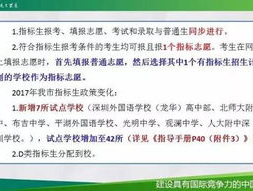Introduction to High School Geography

高中地理, or Geography in High School, serves as a foundational course that introduces students to essential geographical concepts and skills. This subject is crucial for helping students understand the physical world around them, human-environment interactions, and global patterns. It equips students with the knowledge to interpret maps, analyze spatial data, and appreciate the complexities of Earth's landscapes and environments.
One of the key components of 高中地理 is the study of physical geography. This aspect examines natural features such as mountains, rivers, climate zones, and ecosystems. Understanding these elements helps students grasp how natural processes shape the Earth’s surface and influence human activities. For instance, learning about plate tectonics can explain the occurrence of earthquakes and volcanic activities, while climate studies can shed light on weather patterns and their impact on agriculture and human settlement.
Human geography is another critical element of 高中地理. This subdivision focuses on the various ways humans interact with their environment, including urbanization, population distribution, and economic activities. For example, understanding population density and migration patterns can help students analyze urban planning and development issues. Furthermore, examining economic geography allows students to comprehend global trade, resource distribution, and the impacts of globalization.
The Importance of Map Skills and Spatial Analysis
A significant portion of 高中地理 involves developing map skills and spatial analysis capabilities. Students learn to read and interpret different types of maps, including topographic, political, and thematic maps. These skills are essential for identifying geographical patterns and making informed decisions based on spatial data. For instance, being able to read a topographic map can help in understanding terrain features and planning logistics for activities such as hiking or construction.
Spatial analysis is a powerful tool used in 高中地理 to study the location, distribution, and relationships of various phenomena. Geographic Information Systems (GIS) are often introduced at this level to enable students to visualize, analyze, and interpret spatial data. GIS technology facilitates complex analyses, such as predicting natural disasters, planning urban infrastructure, and managing natural resources. By mastering these tools, students can better appreciate the spatial dimensions of environmental and social issues.
Furthermore, map skills and spatial analysis are not only academic exercises but also practical skills applicable in various careers. Professions such as urban planning, environmental consulting, and geospatial analysis heavily rely on the ability to understand and interpret spatial information. Thus, 高中地理 provides students with valuable tools that enhance their employability and capability to contribute to society’s development.
Environmental Awareness and Sustainable Development
高中地理 plays a crucial role in fostering environmental awareness and promoting sustainable development. The curriculum often includes topics related to environmental challenges such as climate change, deforestation, pollution, and biodiversity loss. By studying these issues, students gain a deeper understanding of the fragility of Earth's ecosystems and the importance of conservation efforts.
Understanding the principles of sustainable development is paramount in 高中地理. This concept emphasizes the need to balance economic development with environmental protection and social equity. Students learn about various strategies for sustainable resource management, such as renewable energy sources, conservation techniques, and sustainable agriculture. These lessons encourage students to think critically about the long-term impacts of human actions on the planet.
Moreover, 高中地理 encourages students to become proactive in addressing environmental issues. Projects and initiatives such as community clean-ups, recycling programs, and awareness campaigns are often integrated into the curriculum to provide practical experience. This hands-on approach helps students develop a sense of responsibility and empowerment to make positive changes in their communities and beyond.
Q&A Section
Q: What are the main topics covered in 高中地理?
A: The main topics include physical geography (natural features, climate, ecosystems), human geography (urbanization, population, economic activities), map skills, spatial analysis, environmental challenges, and sustainable development.
Q: Why are map skills important in 高中地理?
A: Map skills are essential for identifying geographical patterns, making informed decisions, and understanding spatial relationships. They are also crucial in various professions such as urban planning and environmental consulting.
Q: How does 高中地理 promote environmental awareness?
A: It includes topics on environmental challenges and sustainable development. Students engage in projects and initiatives that foster a sense of responsibility and proactive involvement in conservation efforts.
Q: What is the role of Geographic Information Systems (GIS) in 高中地理?
A: GIS technology is used for visualizing, analyzing, and interpreting spatial data. It helps in studying complex geographical issues, planning infrastructure, and managing resources.
Q: How does 高中地理 contribute to sustainable development?
A: The subject teaches the principles of sustainable resource management and the importance of balancing economic development with environmental protection and social equity.









